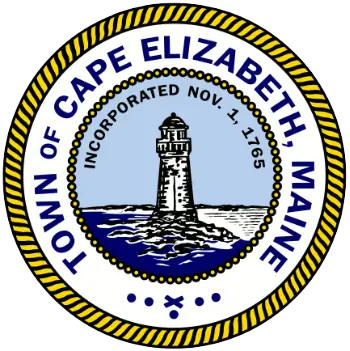Presented to the Town Council Sept. 11, 2017
| Click play button to view video of WinterMoth report by Tree Warden Todd Robbins to the Town Council on Sept. 11, 2017 [download report][download presentation] |
As many Cape Elizabeth citizens have noticed this spring, the leaves of many deciduous trees throughout the town have been stripped partially or, in some cases, fully off their branches. While this has been happening since 2011, it seems as though the epidemic has reached a new height this spring.
There is almost no section of Cape Elizabeth that isn't experiencing some effect of winter moth defoliation. To understand what you can do to prepare yourself for this, you must first understand the life cycle of the winter moth.
Winter moth is an invasive species, introduced into North America from Europe in the 1970's and has worked its way up through New England since the early 2000's. Winter moth feed on the leaves of many deciduous trees and shrubs in Maine. The preferred hosts include oak, maple, ash, elm and most fruit trees (apple, cherry, crabapple and blueberry). The larvae of winter moth heavily defoliate these trees and shrubs in early spring. Trees defoliated by winter moth for consecutive years can lead to the death of previously healthy specimens. Unfortunately, there are no natural predators of winter moth in North America.
Adult male moths are active from late November to January whenever the temperature is above freezing. Many around town have described the movement of these moths as falling snow. The females are flightless and are commonly found crawling at the base of the trees. After mating, females deposit their eggs in host tree bark crevices, scales or loose lichen. The eggs over- winter and hatch in the spring when temperatures reach 55 degrees farhenheit. The larvae crawl up into leaf and flower buds and feed on the expanding buds and foliage. Mature larvae spin down out of the trees to pupate in the soil. They form cocoons where they stay from June to November. Landscape materials such as leaves and lawn clippings being moved from infected areas can spread winter moth as well as the transportation of vehicles, boats etc. where these cocoons may have fallen.
There have been two releases in Cape Elizabeth of the parasitoid fly Cyzenis albicans. This fly is also from Europe and has proven to keep winter moth populations under control there. It is unclear how long this may take to have an effect locally but it is estimated to take years after each release.
In terms of private and residential tree and shrub protection, there are several options. An early horticultural oil spray on infected trees may kill eggs. These products may be purchased at local landscape supply stores. Also, local tree companies can be contracted to spray chemical insecticides in the spring as well. Both of these options are best to be scheduled before the temperature in early spring reach the low 50's. This is something you should be thinking about by late winter. The last option is tree banding. Tree bands act as a barrier to climbing adults.
These strips are covered with a sticky substance that snare climbing female moths. This should be done by early November when adults are active. Tree banding has proven to minimize winter moth but not eradicate them. Tree bands may be purchased online at sheltertree.com.
From a town tree perspective, the Public Works Department, along with the Town Tree Warden, are working on a comprehensive long term plan to deal with the carnage left behind from winter moth attacks since 2011 and current defoliation and attack from one town line to another.
If you have any questions pertaining to any tree within town right of ways, feel free to contact the Town of Cape Elizabeth Tree Warden.
Trees within town right of ways should not be pruned, treated or removed without the approval of the tree warden.
